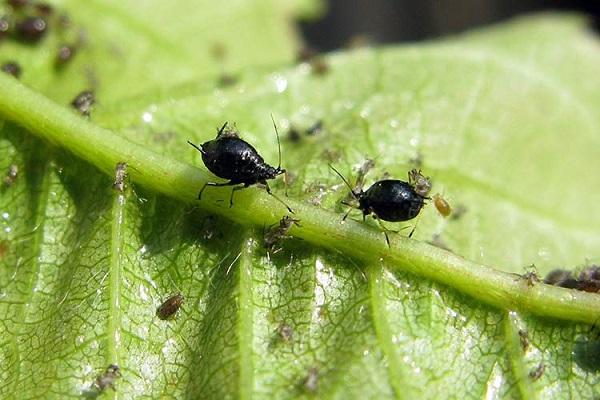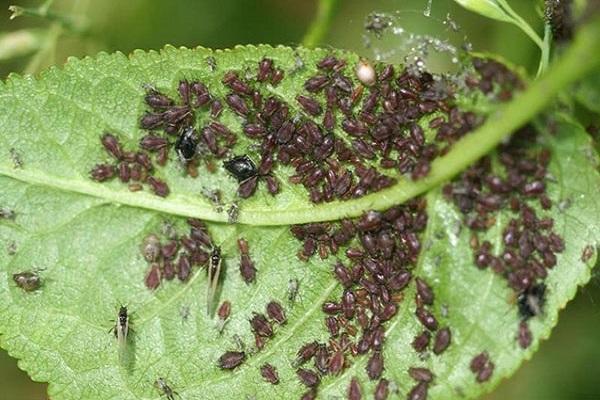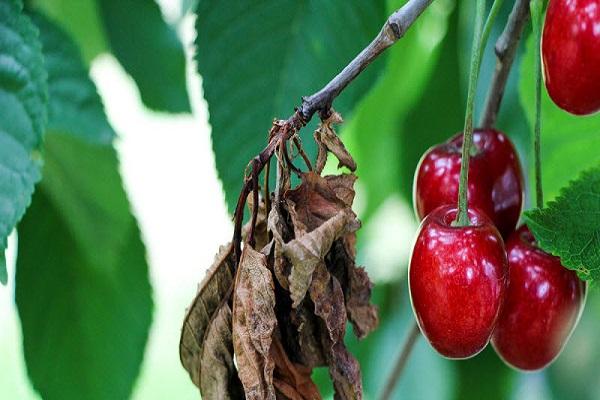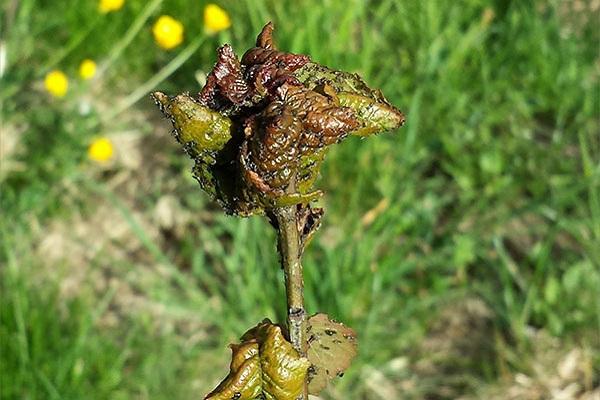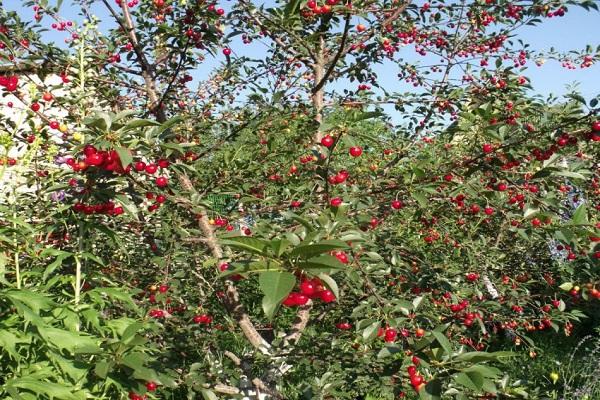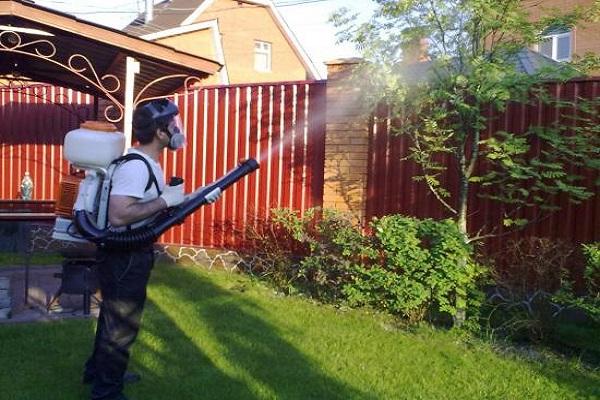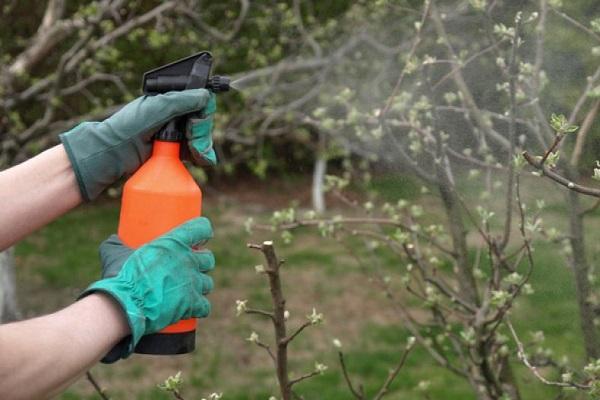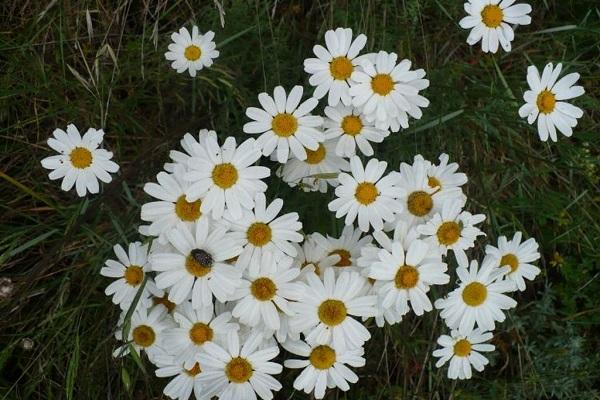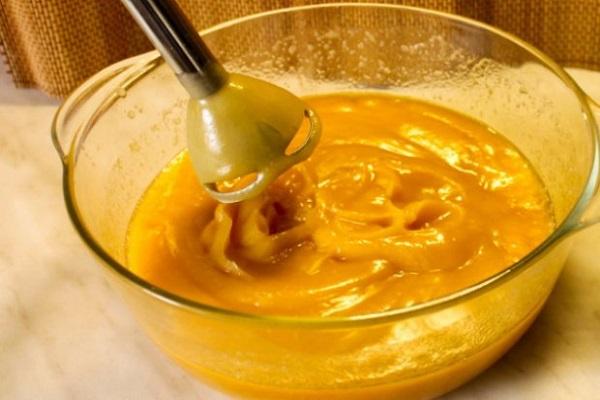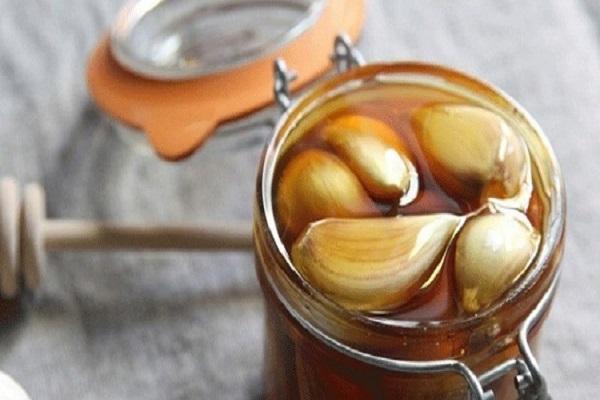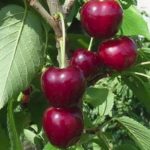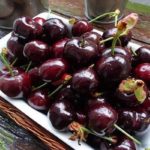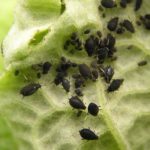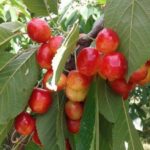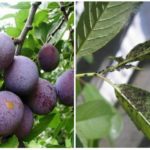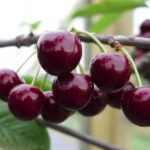With the appearance of succulent foliage on the cherry tree, the summer resident is faced with pests and diseases. The most common insect pest on fruit crops is aphids. It lives in colonies, feeding on plant sap from leaves and succulent young shoots. How to deal with aphids on cherries - this question interests every gardener, since many radical measures do not help.
Description of insects
The appearance of aphids can be detected by the black color of the shoots and leaves, which are strongly curled.The problem of damage to cherries, sweet cherries and other fruit trees lies precisely in the quantitative characteristics of the population. After all, they live in thousands on a tree.
In addition, during their life activity, pests produce a sweetish juice called span. The span attracts other insects. Usually, where aphids are found, there are always ants in the neighborhood who are not averse to eating aphid milk.
In the fall, insects lay eggs on the host plant, in this case it is a cherry, and in the spring, with the arrival of warmth, the larvae hatch and begin to eat buds, milky leaves, and growing shoots. When the colonies eat everything, they begin to fly from one bush to another. Here it is important to treat all plantings in the garden at once. Otherwise, you will not be able to expel the enemy from your territory. Don't forget about the ants, they are also worth fighting.
How dangerous are aphids?
The insect is indifferent to fruits, but if it has already settled on a cherry tree, then goodbye foliage and young shoots. It completely depletes the green mass of the plant from juice. The leaves begin to curl, the buds dry out and fall off. The preserved flowers develop poorly, the fruits grow clumsy and defective.
All these results of pest activity lead to a sharp decrease in berry yield. Aphids are especially dangerous for young bushes or newly planted seedlings. Trees affected by aphids become sick and weak. They do not survive winter well, and some may freeze.
It is worth adding to everything that weak cherries become more vulnerable to viral diseases. When insects cause pests, the foliage is abundantly covered with a sticky sweet coating, which subsequently forms a crust.Thus, the plant receives a minimal amount of oxygen, and fungi of various etiologies settle on the foliage and bark of the tree.
Reasons for the appearance of aphids on cherries
You are probably wondering why aphids appeared in the garden? There may be several reasons:
- Severe weediness in the garden area.
- Presence of ants.
- The cherry tree is severely weakened.
A garden overgrown with weeds provides plenty of space for pests and diseases to develop. And aphids are among them. In the fall, eggs can be laid on weeds; if you don’t get rid of them, the parasite will attack in the spring. Winged individuals fly to fruit crops and begin to eat them en masse.
You've probably heard the phrase that ants milk aphids? This is exactly what happens. In the fall, ants stock up on aphid eggs, hiding them in the soil, and in the spring they take them outside. The aphid begins to develop and secrete a span, which the ant family feeds on. This is such a symbiosis. In this case, all fighting efforts must be directed toward destroying ant colonies.
Signs of pests
It is very easy to detect and recognize aphid pests:
- the presence of curled leaves;
- the presence of a colony of ants near the cherry bush and on it;
- the current growth of shoots is densely covered with aphids, making it appear black;
- there are clouds of flying aphids near the cherry tree and in the garden;
- The leaves become sticky to the touch.
It is quite simple to distinguish black aphids on cherry leaves from other harmful insects. The insect has a plump, almost transparent body on thin legs. On the front of the head there are two large eyes and a pair of antennae. Sometimes there is a green insect. Some individuals have wings.
How to fight parasites
When aphids appear on cherries, measures to combat which we will highlight below, do not panic.The disease is treated simply, but in several stages. An integrated approach is important here, that is, the use of several effective techniques.
Mechanical method
The mechanical method will save cherries to a lesser extent. But if it is combined with spraying, the result will be positive. This method involves removing areas affected by aphids. Non-lignified ends of shoots, leaves, and inflorescences are trimmed.
Important! You can’t pick it off, as you can harm the cherry tree: break the integrity of the bark, accidentally cut off the entire shoot or break it. It is also not recommended to crush the aphids; it is better to put them in a container of water and cover with a lid.
Biological
Some gardeners do not practice the manual method and the processing of cherries with chemicals, since chemical elements penetrate into the cherries, and if picked manually, branches and leaves can be damaged. The biological method is to attract birds or insects to the garden, which destroy pests. This method of control is absolutely safe for both cherries and humans.
Destruction should begin at the moment when the aphids multiply to the maximum. To do this, they buy insects from specialized stores that eat the pest and release them into the garden. These “beneficial” insects include:
- wasps;
- hoverflies;
- ladybugs and their larvae;
- lacewings.
An alternative to beneficial insects is birds. They are specially attracted to the garden by placing all kinds of feeders and houses. These could be simple sparrows and tits, robins and kinglets, similar small birds that feed on insects.
This should also include the cultivation of certain fungi that produce bacteria that infect aphids, after which the insect dies.These bacteria are called avermectins. In addition to adult specimens, they actively eat aphid eggs. Nemabact is such a means of control.
Technological method
This method involves planting plants that have a negative effect on pests. Usually these are strong-smelling herbs and flowers. Under the cherry you can place:
- onion or garlic;
- fennel;
- fragrant or spicy herbs;
- tagetes (marigold), Dalmatian chamomile, pyrethrum.
These plants are carriers of pyrethrins, insect repellent substances.
Chemical methods
The use of chemicals against black aphids on cherries can have both pros and cons. Insecticides work very effectively against aphids, but can accumulate in different parts of the cherry, including the fruit, making them unsuitable for consumption for some time.
Pesticides are usually used 20 days before flowering and 20 days before the main harvest. This technique is necessary to protect children from eating harmful berries and the bees that pollinate cherries.
What drugs are used to treat cherry bushes:
- Aktara;
- Aktellik;
- Inta-vir;
- Bi-58;
- Spark;
- Aktofit;
- Confidor.
These general-purpose insecticides will help get rid of not only aphids, but also other pests. It is recommended to treat the bushes twice, with a 10-day break. The working fluid should be prepared according to the instructions and used in one go, using personal protective equipment.
Traditional methods
Home remedies and folk recipes have been popular for a long time. Before you run to the store for expensive insecticides, you need to see what else you can do to help your cherries. The most effective recipes are:
- A solution of laundry soap and vegetable oil. The body of the aphid is enveloped in the components of the solution and prevents the entry of oxygen into the body, and the aphid breathes through the skin. To 2 glasses of water add 2 tablespoons of grated soap and 1 glass of oil.
- A decoction of wood ash, which is used to irrigate leaves and shoots. Boil 1.5 cups of sifted ash in 2 liters of water. Boil for half an hour. Dilute with cold water in a bucket to make 10 liters of liquid solution.
- Infusion of herbs: tagetes, potato tops, tomato (foliage), yarrow. Grind, add water and leave for 2-3 days. The treatment is carried out twice, with a break of 10 days.
- Mix 10 liters of water, 40 grams of ammonia and 2 tablespoons of tar soap. Treat in the spring, before the leaves bloom.
- Garlic infusion. Chop the garlic cloves (2-3 pieces), add 2 large spoons of vegetable oil and 1 spoon of liquid soap. All ingredients are poured into ½ liter of water and left for several days. Then filter and dilute - 2 tablespoons of concentrate per 1.5 liters of water.
There are a lot of recipes. You can spray with a decoction of onion peels, a solution of calcined salt. Some folk remedies act as foliar feeding of cherries.
Prevention of occurrence
To minimize the number of aphids or prevent their occurrence, it is important to take the following preventive measures:
- Destruction of weeds, especially under cherry bushes, as they appear.
- Timely processing of trees.
- Carry out regular fertilizing to keep the tree healthy.
- Destruction of anthills in the garden.
These measures are simple, but their timely implementation will preserve the fruit harvest and prevent the problem from spreading to other fruit crops.
Aphids on cherries are a common phenomenon. But if you do not pay attention to it in time, the plants may die. In addition, aphids will spread to cherries, apple trees, pears and other cultivated trees and bushes. Follow the suggested measures to remove aphids from cherries and get a large harvest of fruits and berries.

